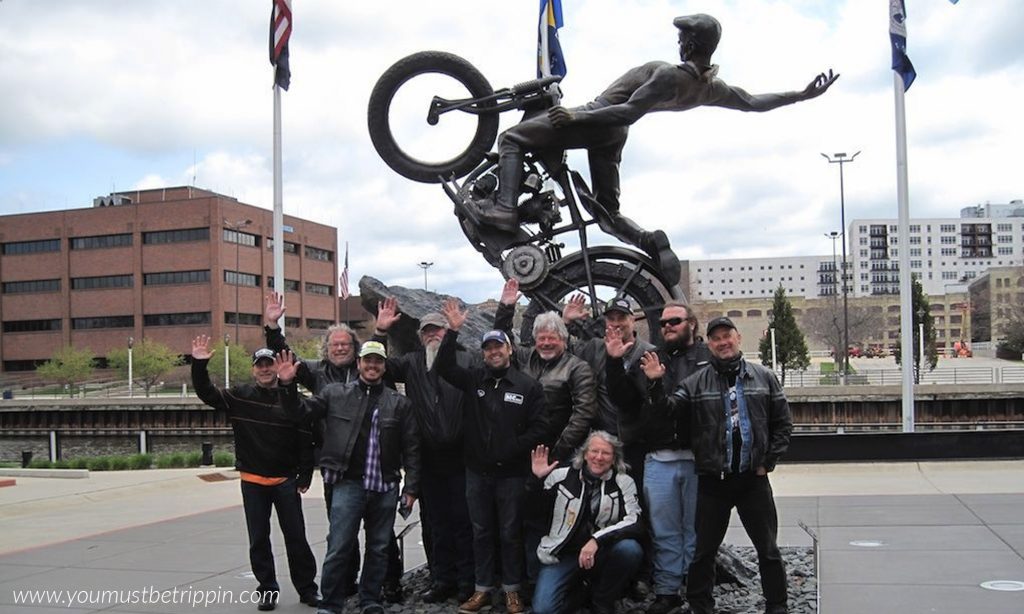Collective intelligence can be a fantastic lever to unleash creativity, generate commitment and increase the performance your company.
Actually, collective intelligence is probably the only thing that can enable humanity to overcome the challenges it faces: social injustice, the return of fanaticism, ecological distress have become so great that no institution can claim to solve them anymore. Only a collective awakening can make the difference.
But before describing further the profits of collective intelligence, let us take a moment to give a definition.
When we speak of collective intelligence, we refer to the ability of a group to self-organize and to demonstrate an overall behavior that demonstrates a greater cognitive ability than any other of the individuals composing it.
This phenomenon is related to what science calls emerging properties. The latter are observed at all levels, from the microscopic world to the macroscopic world. For example, when two hydrogen atoms and one oxygen atom are combined, this produces something fundamentally different from these elements taken separately: water.
Similarly, when two human beings interact, they behave differently than when they are alone. This phenomenon becomes even more marked when the number grows and gives birth to an organization. AN organization obeys its own laws, which are distinct from individual psychology. Among the first theorists who attempted to model these laws, there is Gustave le Bon and Gabriel Tarde, who are the fathers of modern collective psychology.
Collective phenomena can lead to negative manifestations: for instance collective hysteria, where being part of a crowd disinhibits individuals and causes them to commit acts of violence they would be unable to accomplish otherwise.
They can also lead to positive manifestations, which can be observed in any collective sport. In a team, a player will be small and fast, another will be strong and enduring; Another will have an excellent tactical sense, and another will have the ability to motivate his comrades. Separately, these features quickly reach their limits. However, their combination forms something more important and more efficient than the sum of the parts. The pilots who fly planes in acrobatic formation thus explain that they sometimes feel that they are becoming a true collective organism capable of manifesting clairvoyant behavior without the information following a hierarchical path between them.
Collective intelligence is also omnipresent in the animal world: ants or bees, for example, demonstrate an incredible degree of intelligence in their organization, even though the individuals cut off from the collective turn out to be unintelligent and lost. This same phenomenon is observed in mammals in wolf packs, in monkeys, birds, etc.
However, while collective intelligence is predictable in nature because it arises from instinct, its existence in mankind depends on cultural conditions.
We live in a time when individualism and competition predominate, but in the earliest ages of humanity, the ability to cooperate was a vital condition of survival for the group. It is only when our ancestors began to free themselves from the constraints of their environment that the notions of ownership, hierarchy and territory began to arise in human society. Empathy is therefore inscribed in the deepest levels of our being, but it is in constant conflict with behavioral programs which favor individualistic strategies that have emerged later in our evolution.
To demonstrate collective intelligence, a human organization therefore needs to unite certain key factors. These can be created by organizational engineering, but also because the context requires it. For example, during a crisis…
Somes examples of collective intelligence
« Houston… We’ve had a problem »
The Apollo XIII crew
We are April 14, 1970. At 3:00 am, an oxygen tank of the Apollo service module explodes as it travels to the Moon. In a matter of seconds, this accident transforms the Apollo mission into a race against the clock to bring the crew back safe to Earth.
Initially, the probabilities of doing so are extremely low: without oxygen, the three men shut up in the shuttle have almost no means to survive.
Since it is impossible to turn around, the only possible strategy is to continue the journey to the Moon and calculate the trajectory of the space module so that it enters the lunar orbit and returns to Earth.
As the main module has become uninhabitable, the three astronauts take refuge in the lunar module Aquarius. It is not made to shelter life for a long time, and in order to conserve energy, 80% of electric devices are cut off. The temperature falls to -9 ° C, the CO2 rate increases rapidly. The three men risk death by suffocation.
It was then that NASA engineers tinkered an air filter in a record time, enabling them to eliminate excess CO2:
Finally, the shuttle enters the atmosphere and the 3 astronauts manage to save their lives by gradually switching the systems back online and reintegrating the main module at the right time…
This incredible tour de force was made possible only by the extraordinary inventiveness of the teams of NASA. For example, since communications were limited and costly in terms of energy, NASA developed a compression algorithm under Apollo 13. The ancestor of the current MP3!
Now, let’s consider what happened to make this feat possible. In principle, a space center obeys very strict rules and hierarchy, based on the extreme specialization of tasks in a high-tech sector. But during the three days that separated the explosion of the oxygen reserve from the Apollo landing in the Pacific waters, the silos that existed between the individuals, jobs and expertise in the center of Huston have disappeared. They were replaced by a collective brain that has existed only for one purpose: to save the crew.
This story perfectly summarizes the necessary conditions for collective intelligence: a powerful purpose which puts aside the ego of individuals and awakens in everyone the desire to give the best of himself to achieve a goal common.
Imagine if the people in your organization were able to have the same level of commitment on a daily basis. Everything would become possible!
Maybe you think that Apollo 13 is an exceptional example, and that outside a crisis context, it is impossible to achieve the same level of commitment and creativity.
But in reality, there are many companies that have put collective intelligence at the center of their daily work. A striking example is given by Harley Davidson. While the brand is on the brink of bankruptcy in 1983, the management sets up a bold system that not only allows employees to propose innovative ideas, but also to realize them together.
This method gives stunning results: one of the employees has set up a Harly Davidson club. At the time, these are confidential and concern only a few thousand fans. However, the collaborator senses that these clubs can contribute to the success of the company, and he proposes to promote them to customers. Today, Harley Davidson clubs have more than 2 million members across the globe and are one of the major factors in the brand’s popularity. That’s not all: the employees also invent a new design for the Harley Davidson and creates a new and more efficient transmission shaft. All these innovations put the company back into business.
Harley Davidson’s illustration is just one of many: Facebook’s “like” button emerged from an internal hackathon, and there are dozen of examples of how collective agility revitalized companies and developed performances.
This also applies to the public sector: in the Japanese city of Iwate, the mayor has found an original solution to the economic crisis. In 2001, he invited his 8,800 inhabitants to propose ideas to make their city a “slow city”, which places the human relationship at the center of things. 10 years later, Iwate became a pioneer tourist center in Japan.
Transforming the leader to transform the collective
But then, if collective intelligence presents such benefits, why all organizations do not systematically develop it?
Part of the answer lies in the fact that it is a very young science, especially when compared to its twin sister, the manipulation of the masses, which rely on a heritage of several centuries.
Collective intelligence is a subset of collective psychology. And while collective psychology is in itself a neutral approach, which can lead to both liberating and alienating applications, it is largely the second category that has predominated up to now. Politics and then marketing have accumulated an impressive wealth of knowledge about how to manipulate the masses and guide collective decisions while giving everyone the impression of choosing freely.
This way of considering the human group as a stupid animal, potentially dangerous and which must be guided for its own good to have largely permeated the whole society. Few people understand that there is an unexploited potential behind this representation that is actually the solution to most of our problems.
From this point of view, the future of collective intelligence rests largely on the leaders. No organization can go beyond the vision of its leaders: if they are unable to trust employees, collective intelligence can never develop beyond small pockets.
That is why raising managers’ awareness is a prerequisite. Indeed, it is even difficult to imagine how a leader can do his job without being a minimum trained in collective intelligence!
This is an exercise that is not simple, because the first reflex of most current leaders is to solve problems instead of collaborators. They often live in the “superhero syndrome” because they feel this is what make them exist within the organization.
To change this, it is often useful to propose to the board of directors some practical exercises to make them understand through experience the benefits that collaborative intelligence can bring to them.
Once they have made this experience for themselves, by measuring what it can generate both in terms of personal development and operational effectiveness, it becomes possible to bring them to the next stage, which is to develop it within the organization itself.
In this field, digital can provide very useful solutions for setting up collaborative ideation platforms, project groups, intrapreneurial programs, participatory budgets, continuous feedback, collective bonuses, and so on.
The other side of the mirror
It must be understood, however, that bringing collective intelligence into an organization is more then a mere “upgrade of the organizational software”.
Many companies seek to develop collaborative intelligence, but they do so in a more or less directive fashion, resulting in paradoxical injunctions.
In reality, developing collective intelligence is like to crossing the other side of the mirror and discovering a new universe, where there are no more certainties, but also where the field of possibilities is incomparably larger.
To be effective, employees need to understand their immediate mission and to have the concrete means to realize it, but also to adhere to a global vision which is for them a source of pride and commitment.
This is the condition for all the production entities of an organization to function in harmony, and not simply as an aggregate whose sole unit consists of a logo and a slogan.
The more an employee understands the global issues of the company, the more it is able to anticipate needs (both internal needs and customer needs) and to act in solidarity with other entities, business units and services. Conversely, the less he reasons in a holistic way, the less he will be able to adapt, while adapting will be the cornerstone of tomorrow’s business.
In the same way, employees should be encouraged to express their point of view: vision is all the more easily assimilated as it is co-constructed. They must feel that they have an impact on their environment.
Since the beginning of the industrial era, we have considered the organizations from a mechanistic point of view. As machines, companies were to achieve a predetermined objective through predefined processes.
The first challenge is to get out of this way of thinking: human beings are not instruments that can be manipulated to keep the organization in an illusory sense of control and security.
It is the same as in particle physics, where it is impossible to know simultaneously the position of an atom and its final destination. Collective intelligence brings the organization into a fluid state that makes it unpredictable in the moment, but which in turn gives it the ability to adapt. It is a choice between the path and the finality.
As the world becomes more and more fluctuating, the path is going to be less and less important, and the only way to carry out the project of the organization will be to trust the collective to adapt and innovate permanently. This is why betting on the project over the process is the good strategy.
The leaders of tomorrow will be those who understand this principle. They will not behave as supermen having all the answers; instead, they will be coaches of the organization, gardeners whose main objective is to make the collaborators grow so that the collective can unleash its full potential.



